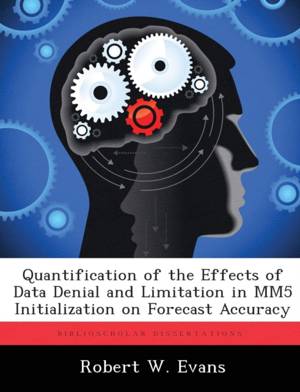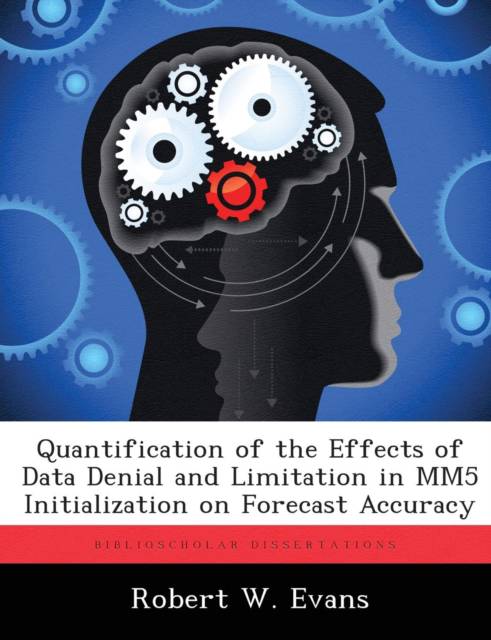
- Afhalen na 1 uur in een winkel met voorraad
- Gratis thuislevering in België vanaf € 30
- Ruim aanbod met 7 miljoen producten
- Afhalen na 1 uur in een winkel met voorraad
- Gratis thuislevering in België vanaf € 30
- Ruim aanbod met 7 miljoen producten
Zoeken
Quantification of the Effects of Data Denial and Limitation in MM5 Initialization on Forecast Accuracy
Robert W Evans
Paperback | Engels
€ 54,45
+ 108 punten
Omschrijving
Denied and limited model input data degrade the accuracy of numerical weather prediction (NWP) model forecasts. Inaccurate forecasts can negatively impact all military operations and public safety in general. Using the 3-Dimensional Variational Analysis data assimilation scheme and the Pennsylvania State University (PSU)/National Center for Atmospheric Research (NCAR) Mesoscale Model 5 (MM5) as configured and run operationally by the Air Force Weather Agency (AFWA) in the European theater, input observations were denied in three different categories: total, upper air, and surface observation denial. Two control groups were run using all available data as received by AFWA. The main control group used a 6-hour old first guess as a baseline. The data denied test cases and the secondary control group used a 30-hour old first guess because it was not possible to deny data from the first guess. The secondary control group was used to estimate errors resulting from the use of different first guess forecasts between the main control group and the test cases for all forecast times. The analyses show statistically significant differences between the main control group and test cases in almost every instance.
Specificaties
Betrokkenen
- Auteur(s):
- Uitgeverij:
Inhoud
- Aantal bladzijden:
- 124
- Taal:
- Engels
Eigenschappen
- Productcode (EAN):
- 9781288280520
- Verschijningsdatum:
- 12/11/2012
- Uitvoering:
- Paperback
- Formaat:
- Trade paperback (VS)
- Afmetingen:
- 189 mm x 246 mm
- Gewicht:
- 235 g

Alleen bij Standaard Boekhandel
+ 108 punten op je klantenkaart van Standaard Boekhandel
Beoordelingen
We publiceren alleen reviews die voldoen aan de voorwaarden voor reviews. Bekijk onze voorwaarden voor reviews.











